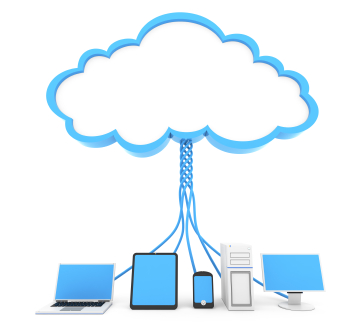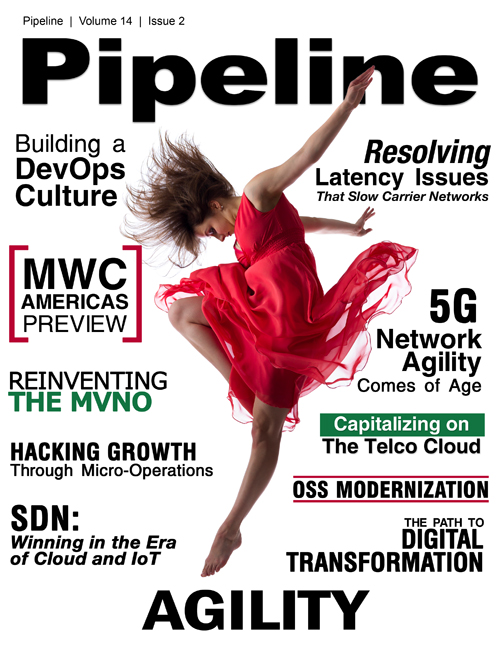Capitalizing on Telco Cloud in the Era of Digital Transformation
By: Susana Schwartz
 Microsoft Azure is impressing analysts with double-digit growth in its commercial cloud services during the past year, working with carriers that are aggressively pursing digital
transformation, such as AT&T, Verizon, Telstra, Telefonica, and Deutsche Telekom, as well as technology providers that possess a deep OSS/BSS acumen, such as WeDo Technologies, Amdocs and
Apttus. Pipeline had the opportunity to talk to Microsoft's Eric Troup, CTO, worldwide media and telecommunications, and Rick Lievano, worldwide
director of industry technology strategy, telecommunications industry. Below, we summarize some of the key trends driving the move to public cloud in telecom, and how
Microsoft Azure is relevant in its deepening commitment to telecom, open source, and telecom-related standards.
Microsoft Azure is impressing analysts with double-digit growth in its commercial cloud services during the past year, working with carriers that are aggressively pursing digital
transformation, such as AT&T, Verizon, Telstra, Telefonica, and Deutsche Telekom, as well as technology providers that possess a deep OSS/BSS acumen, such as WeDo Technologies, Amdocs and
Apttus. Pipeline had the opportunity to talk to Microsoft's Eric Troup, CTO, worldwide media and telecommunications, and Rick Lievano, worldwide
director of industry technology strategy, telecommunications industry. Below, we summarize some of the key trends driving the move to public cloud in telecom, and how
Microsoft Azure is relevant in its deepening commitment to telecom, open source, and telecom-related standards.
Nearly a century ago, Nikola Tesla anticipated, "When wireless is perfectly applied, the whole earth will be converted into a huge brain." Today, the company bearing his name can do over-the-air software updates to fix cars that would otherwise have to go to dealers or mechanics during recalls or engine problems.
As with Tesla in the automobile industry, GE in industrial IoT, John Deere in precision farming, or any of those driving digital innovation, it is cloud-driven, software-defined platforms that enable what Chetan Sharma coined as “connected intelligence.” Billions of end points communicating the data of “things” will further advance brilliant factories, telemedicine, smart cities, connected cars, augmented and virtual reality, robotics, AI and everything that characterizes the digital economy. That digital economy will have a total potential economic impact of $3.9 trillion to $11.1 trillion per year by 2025, according to McKinsey Global Institute.
At the heart of that economic impact are the communications service providers (CSPs), network and mobile operators that own not only the networks, but the communications enablement and management systems that all enterprises and web-scale, digitally inspired companies will need to connect, collaborate and innovate.
Business leaders in all sectors will build “communications clouds” (a.k.a. “telco clouds”), which will elevate communications as an enabler to every feature or function affecting customer experience (CX). That will be important to all sectors moving on the continuum toward on-demand, customer-configured services and zero-touch provisioning and deployment of services.
CSPs have a chance to capitalize on this enormous opportunity by helping enterprises seeking to integrate text, voice, video, chat, and screen sharing into all aspects of CX (internal for employees and external for customers and partners), as well as automate, orchestrate, analyze, and improve processes and interactions.
Capitalizing on that opportunity will depend on how quickly CSPs move toward hybrid cloud, as many today are building multiple, separate clouds in silos — usually by business unit. This approach often leads to bespoke application implementations and future operational pain when trying to migrate applications across cloud infrastructure for scale, cost reductions and efficiencies.
In anticipation of those pain points, CSPs are increasingly resisting vendors and solutions that will lock them into a single environment, as the very purpose of becoming software-defined digital service providers is to knock down walled gardens that promote siloed OSS/BSS architectures and NFV infrastructure managers.
Hybrid Cloud will be the Foundation for Multicloud Environments in Telecom
“Historical and sovereignty concerns have led CSPs to be particularly protective of their data, so data governance is a constant in everything they pursue in the digital world,” said Rick Lievano, worldwide director of industry technology strategy, telecommunications industry.
Indeed, CSPs are notorious for wanting to maintain control, and as such have traditionally kept critical data and functions on-premise, especially when relevant to sensitive customer, regulatory, licensing, compliance, or security data.



















